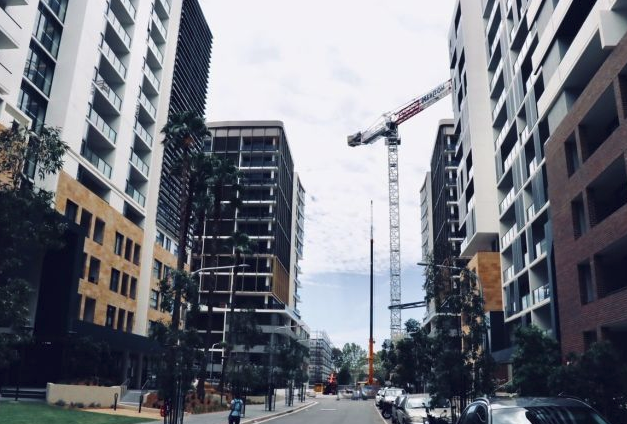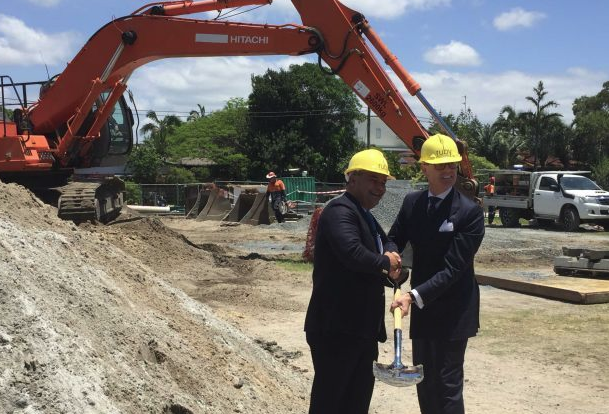Australia’s construction slump is taking its toll on the major companies in the industry with one of the nation’s largest developers, Ralan Group, forced into voluntary administration, according to ABC Australia. The developer has frozen billions in apartment projects, and has debts of about $500 million to its creditors.
Cement manufacturers, like Adelaide Brighton, have also felt the pain. Adelaide Brighton recently suspended its interim dividend after downgrading its profit forecast, sending its shares down 18.3% in recent trading. Similar Australian companies like Boral and CSR also saw their stocks plunge 7.8% and 6.1%, respectively, as a result. This happened one day after building approvals plunged 25.6%.
Ralan Group’s administrators, Grant Thornton, said that the company has a “development pipeline of over 3,000 residential units which are in the construction or pre-sale stage as well as operating accommodation assets comprising over 600 rooms”.
Grant Thonton’s national managing partner Said Jahani said: “In terms of the operating businesses within the group, it is as far as possible, business as usual. We are working closely with key stakeholders to identify and preserve value for creditors.”
The administrators are still conducting an “initial investigation” as to why the company collapsed. In the case of Adelaide Brighton, it warned that its underlying net profit would “fall to $120-130 million this calendar year — a 37 per cent drop compared to the $190.1 million profit it earned last year.”
The company said “further softening of conditions in the residential and civil construction markets” was to blame. “Continued competitive pressure” in Queensland and South Australia and “sustained increase in raw material costs” were also cited as reasons for the cut.
It was the second profit downgrade from the company in less than 3 months. Citi’s building materials analyst Daniel Kang downgraded Adelaide Brighton’s stock two months ago, stating:
“A vicious cocktail of an accelerating housing downturn, intensifying competition and higher raw material costs triggered the company’s profit warning.”
The broader data coming out of Australia’s construction sector continues to be dismal:
-
ABS revealed this week that building approvals had fallen 1.2% in June, driven by a slump in apartment construction.
-
Annualized results were even uglier, with total dwellings receiving construction approvals down 25.6% for the year.
-
Approvals for houses were down 14.8% over the same 12 month period.
-
Apartment approvals posted a catastrophic 39.3% plunge since June 2018.
-
Trend approvals are now at 174,000 for the year, the lowest in 6 years.
Morgan Stanley economist Chris Read said: “We expect further declines in building approvals in the coming months, given the elevated level of new supply coming to market and still tight credit conditions.” Meanwhile, UBS chief economist George Tharenou “forecast[s] no recovery, with dwelling commencements to drop to 170,000 this year”.
Tharenou stated: “Hence, as the still near record pipeline of activity completes, GDP-basis dwelling investment will likely still decline for at least a year, and probably slump by around 10 per cent year-over-year, dragging down construction jobs.”
BIS managing director Robert Mellor concluded:
“Australia’s dwelling stock deficiency will grow once again as rising undersupplies in Victoria, Queensland and Tasmania develop by 2020/21. We anticipate this pressure to facilitate growth in house prices and rents, helping create a renewed upswing in residential building starts through the early to mid-2020s. The downturn has further to run with an additional 8 per cent decline forecast for 2019/20, with the fall in residential building outweighing the growth expected in the non-residential sector.”
Finally, for those who use Australia as a direct proxy of its biggest trade partner, China, the accelerating slowdown down under is an especially ominous indicator for what is truly taking place below China’s carefully maintained artificial facade.
via ZeroHedge News https://ift.tt/2yxDjuD Tyler Durden

